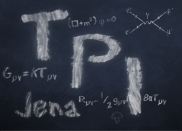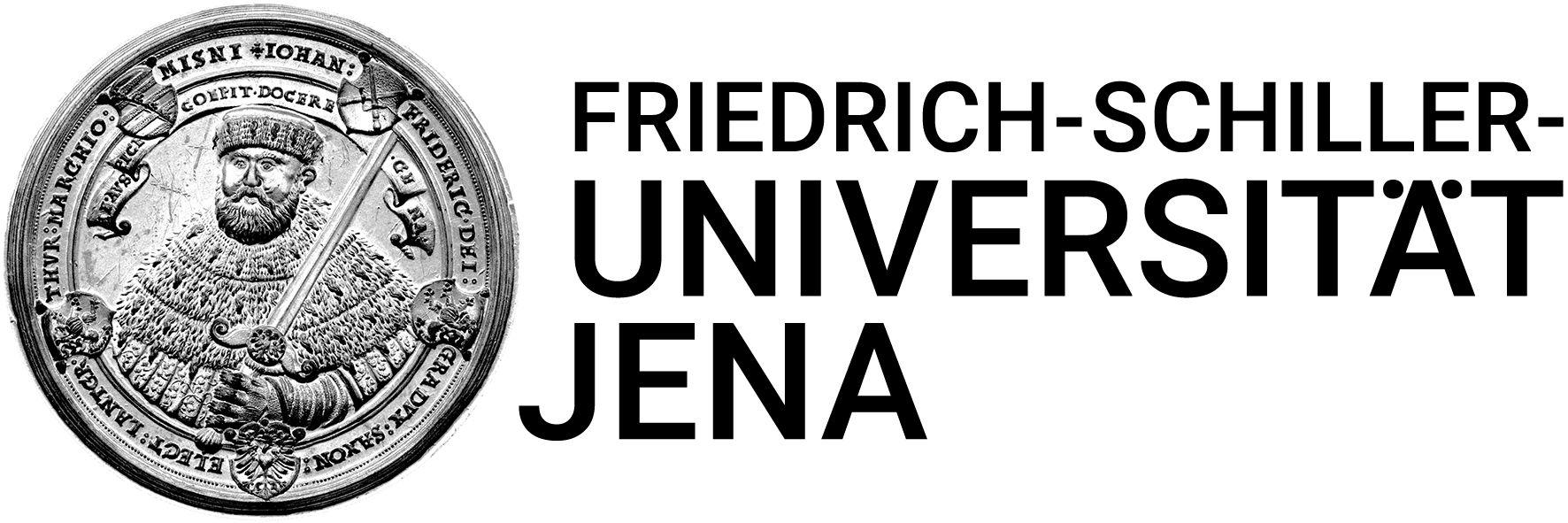Georg Bergner

Dr. habil. Georg Bergner
Theoretisch-Physikalisches Institut
Friedrich-Schiller-Universität Jena
Max-Wien-Platz 1
D-07743 Jena
Tel.: +49-3641-947139
Email:
georg.bergner
uni-jena.de
Room: Abb 202
Lattice gauge theory:
New results and recent developments
(Seminar at the ITP)
Thursday 10:15-12:00, room 02.120 (winter semester 2013/14)
earlier events: summer semester 2013
| Date | Talk |
|---|---|
| 16.10.2013, 14:00 |
First meeting: Organization and Talks
|
|
Shifted date, time, and location! 23.10.2013, 17:30, Room 02.114 |
Thomas Epelbaum
(CEA)
Early isotropization of the Quark Gluon Plasma
In recent years, the problem of thermalization in Heavy Ion Collision has received much attention, but has yet to be solved. The issue is the following: on one hand, viscous hydrodynamics simulations suggest that the matter produced in such collisions (called the Quark Gluon Plasma, or QGP) behaves like a nearly perfect fluid, and does so very shortly after the collision (around 1 fm/c). Since hydrodynamics requires local thermal equilibrium, this tends to show that the QGP has thermalized during the very early stages of the collision. On the other hand, theoretical models (based on microscopic theories like the Color Glass Condensate, or CGC) predict that the QGP is very far from local thermal equilibrium at the initial time (among other non-thermal features, its energy-momentum tensor is very anisotropic). One of the approaches developed to study this non-perturbative problem in QCD is a resummation scheme that amounts to averaging over classical fields, with random initial conditions given by a one loop calculation in the CGC framework.
We present here recent results obtained by following this approach, showing an early isotropization of the system compatible with viscous hydrodynamics. |
| 31.10.2013 |
Jens Langelage
(ETH) |
| 7.11.2013 |
Eduardo S. Fraga
(Universidade Federal do Rio de Janeiro)
Chiral Transition and Deconfinement in Magnetic QCD
We review the influence of a magnetic background on the phase diagram of strong interactions and how the chiral and deconfining transitions can be affected. After some motivation, we summarize results for both transitions obtained in the framework of the linear sigma model coupled to quarks and to the Polyakov loop, and how they compare to other effective model approaches and to lattice QCD. Then we discuss the outcome of the magnetic MIT bag model that yields a behavior for the critical deconfining temperature which is compatible with recent lattice results and magnetic catalysis. The qualitative success of the magnetic MIT bag model hints to Tc being a confinement-driven quantity, and leads us to the discussion of its
behavior as predicted within the 't Hooft limit of QCD, which is also in line with the most recent lattice QCD results provided
that quarks behave paramagnetically. Finally, we present the first results of a perturbative calculation of the pressure in the
limit of very high magnetic fields with a surprising behavior in the chiral limit.
|
| 14.11.2013 |
Marc Wagner
The colour adjoint static potential from Wilson loops with generator
insertions and its physical interpretation
|
| 21.11.2013 |
Chihiro Sasaki
Fluctuations and the QCD phase structure from effective theories
|
| 28.11.2013 |
|
| 5.12.2013 |
|
| 12.12.2013 |
Christian Schäfer
Lattice computation of the transport coefficient kappa in Yang-Mills theory
From heavy-ion collision experiments we know that the quark-gluon plasma behaves almost like an ideal fluid and can be described by hydrodynamics. The dynamic properties of the quark-gluon plasma are determined by transport coefficients.
The second order transport coefficient kappa is related to a momentum expansion of the euclidean energy-momentum tensor correlator at vanishing Matsubara frequency. The computation of the Fourier-transformed correlator in lattice gauge theory allows the determination of kappa from first principles. We present the results obtained by pure Yang-Mills lattice simulations in comparison to a computation in quasi-free lattice perturbation theory as well as the temperature dependence of the transport coefficient kappa. |
| 19.12.2013 |
Mathias Neuman
Simulating Lattice QCD in the heavy dense region
Simulations of QCD in the finite density region are difficult because of
the so called sign problem. After a short review of this
problem I introduce the method of Complex Langevin which is capable of
solving this problem and the effective theory we use to investigate full
QCD. The theory is derived by a combined strong coupling and hopping
parameter expansion around the limit of infinite gauge coupling and
infinitely heavy quarks. In this way the full quark determinant and the
gauge action of four dimensional lattice QCD is expanded in orders of the
hopping parameter kappa and the gauge coupling beta. After that, a
dimensional reduction is achieved by analytically integrating over the
spatial links. This theory is then used to investigate QCD with heavy
quarks near the cold and dense limit. Continuum extrapolated results for the
onset of nuclear matter and results concerning the equation of state are
shown and the region of convergence of the effective theory is discussed.
|
| 16.1.2014 |
Wolfgang Unger
Gauge corrections to the Strong Coupling limit of Staggered Fermions
|
| 23.1.2014 |
Maximilian Attems
State of the art realtime dynamics of non-equilibrium anisotropic systems
The early phase of an ultra-relativistic heavy ion collision is
characterized by non-equilibrium gauge field dynamics. In particular,
chromo-Weibel instabilities have been proposed as collective phenomenon
that may thermalize a weakly coupled non-Abelian plasma. In this context,
I will discuss analytical and numerical progress based on the Color Glass
Condensate effective theory that assumes an initial very anisotropic
energy momentum tensor. Recent work involves the novel incorporation of
fermions in the Yang-Mills evolution of this QCD system.
|
| 30.1.2014 |
Alessandro Sciarra
The fermion doubling issue and the staggering procedure in the free case I
A naive discretization of the QCD leads to the well known fermion doubling problem. Though its origin can be
traced back to the use of the symmetric form of the lattice derivative, this choice guarantees the hermiticity of the
action. Nevertheless one must get rid of the doublers in order to describe the correct continuum physics. In the last
decades several approaches to reduce or even solve this problem have been proposed, but each of them has advantages and disadvantages.
In this seminar we will show how the naive discretization of QCD fails and we will focus on the origin of doublers. Then an overview of the staggered formulation, one of the most popular schemes dealing with the doubling problem, will be given.
|
| 6.2.2014 |
Andrea Shindler
(Forschungszentrum Jülich)
Chiral symmetry, Wilson twisted mass and the gradient flow
After a pedagogical introduction to chiral symmetry and strong interactions, I discuss
in a simple way the interplay between chiral symmetry and discretization errors
in the dynamic of fermions on a space-time lattice.
More specifically I focus on a specific fermion lattice action, the so-called Wilson twisted
mass action.
In the last part of the seminar I discuss a new development, the so-called Yang-Mills gradient flow, and I show that chiral symmetry and the
related Ward identities can be extended to operators defined at
non-zero flow-time.
|
| 13.2.2014 |
Mariam Atoui
(Clermont-Ferrand)
Semileptonic B decays into D** with finite quark masses from LQCD
|
| 27.2.2014 |
Alessandro Sciarra
The fermion doubling issue and the staggering procedure in the free case II
After a short summary of the main ideas of the staggering procedure, all the technical details will be discussed. In particular we will show how to reconstruct the physical fields out of those on the lattice, what the theory describes in the continuum limit and why this formulation is so attractive for studying spontaneous chiral symmetry breaking and the associated Goldstone phenomenon in theories like QCD with massless quarks.
|

